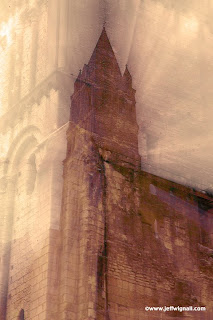 I'm guessing that about five minutes after the first zoom lenses were introduced, some clever photographer discovered the "zooming" technique. He showed a friend, then he showed a friend and pretty soon the whole world was zooming (if you were around and looking at photography in the 1970's, you remember this well). And while it was probably overdone to some degree back then, it's still a fun and creative technique and can save you creatively in certain (albeit rare) situations.
I'm guessing that about five minutes after the first zoom lenses were introduced, some clever photographer discovered the "zooming" technique. He showed a friend, then he showed a friend and pretty soon the whole world was zooming (if you were around and looking at photography in the 1970's, you remember this well). And while it was probably overdone to some degree back then, it's still a fun and creative technique and can save you creatively in certain (albeit rare) situations.Using the technique is very simple: you just rack the zoom lens from one focal-length extreme to another during a long exposure--typically between about 1/4 second and a full second. The technique works best with DSLR cameras because there is a physical lens barrel to twist (or push-pull) during the exposure. I think you could mimic the technique with some (or even all) point-and-shoot cameras but to be honest I haven't tried yet.
To get somewhat predictable and controllable images (though everything is something of an experiment when you're playing with techniques like this), it's best to use a tripod to steady the camera. Then select your framing and, with the zoom lens either at its shortest or longest focal length, use the manual mode (or the shutter-priority exposure mode) to select a long shutter speed. Then simply push the shutter release button and rack the zoom to the opposite end of its focal length range. Experiment with faster/slower zooms and using a limited range to see the different effects you get.
I used the zooming technique for this shot of a church in Loches, France because when I got to the church it was nearly dark and the lighting was horrible. I had this feeling that if I zoomed the shot during a full-second exposure I might recreate something of the medieval auro of the town. Look at the shot carefully and you'll see two sharp images of the church: one at either end of the zoom because I paused at both extremes, very briefly. I actually like the shot a lot and I'm glad I shot a few dozen frames that way. There is additional info on zooming in my Night Photo Tutorial on my main site.






No comments:
Post a Comment